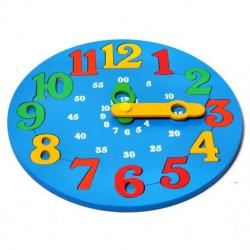To be thus helpful it is necessary rigorously to avoid the arrest of spontaneous movements and the imposition of arbitrary tasks. It is of course understood, that here we do not speak of useless or dangerous acts, for these must be suppressed, destroyed.
Dr. Maria Montessori The Montessori Method

History Education in Montessori
History is the study of the past. It begins with the present and it looks at what has come before. For children, to get the sense of time, it can be quite difficult. They usually have a hard time understanding the day before as yesterdays and the next day as tomorrows, but most children understand their grandparents and they can relate to the past to one of their grandparents. For children, it is difficult to understand that an adult was once a child, which is the reason, teachers discuss how they have a daddy and how every person grows older everyday and how their daddy was an adult and was once a child too.
Then discuss how their daddies have a daddy and he too was a child once. The overall idea is to show the reflection of how past was and how the past reflects onto many things happening at present. The information of history is either provided orally and informally or through textbooks during some of the History/geography exercises. For example, the evolution of electricity, the development of roads, vehicles, clothes, culture and civilizations are discussed.
Purpose of History in Montessori
Teaching history as a big, overall picture gives a broader context in which the history can make sense. It imparts deeper meaning for the modern day child’s experience. When brain researchers look at this sort of learning situation, they say there is an optimal opportunity to transfer the pieces of data into long term memory. But more important than the memory of specific facts is the processing of the logic behind the history. Most importantly, it cultivates the understanding of how human nature responded to problems in the past and thinking about how humans will respond to problems in the present and the future. Teaching history from a big picture perspective allows the type of learning which is more likely to transfer when new topics and learning situations are presented. Students who have this kind of experience of history, will tend to look at modern problems from several different perspectives and be accepting of cultural, ethnic, and socio-economic differences of opinion.
The aim is to teach children to learn important lessons from the events so they could take these lessons into the future to create a better world for those who would follow. Basic work in the concept of the passage of time begins with the child's life. Through activities like "Time Line of My Life", the "Time Line of My Family" and "A Short History of My Life", the first grade children learn to apply the regular units of time measurement to their own experience. The child is also introduced to the days of the week, the year and its parts, and the seasons. One of the materials used for these studies is the Stages in the Progress of Civilization folders, which explore how fundamental needs were met by early man, the ancient Egyptians, the ancient Greeks, people of the Middle Ages, people of the Renaissance and modern man.
Exercising Hisotry in Montessori
You can have a history table with the items you have discussed in class that relate to history. For example, if you have been talking about how there used to be no electricity, you can discuss what might have been used to give light. You can then have a candle on the history table. This gives the child the opportunity to think about how people did not always live as we do today. History Cards deal with the needs of man. Diagrams and puzzles of the home country puzzle piece in the center of the mat. The measurement of time can be done by the use of a calendar. This shows the days go by which gives them the idea of yesterday and tomorrow. The date can also be discussed.
It is therefore important to have a calendar that can be used to mark the passing of time and the date for each day the children are in school. The "Months of the Year" exercise will be able to have material to show the cycle of months throughout the year. This can be through the use of different images that show the different months of the year. Cultural Contributions,in this the Montessori studies of history don’t stop with these timeline-based lessons. The curriculum includes an emphasis on the study of cultures,both current and historical. A child in the Montessori classroom will have the opportunity to investigate the people of ancient times as well as modern day people around the world.

